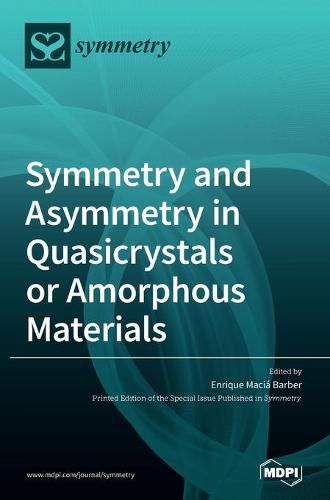Readings Newsletter
Become a Readings Member to make your shopping experience even easier.
Sign in or sign up for free!
You’re not far away from qualifying for FREE standard shipping within Australia
You’ve qualified for FREE standard shipping within Australia
The cart is loading…






This title is printed to order. This book may have been self-published. If so, we cannot guarantee the quality of the content. In the main most books will have gone through the editing process however some may not. We therefore suggest that you be aware of this before ordering this book. If in doubt check either the author or publisher’s details as we are unable to accept any returns unless they are faulty. Please contact us if you have any questions.
About forty years after its discovery, it is still common to read in the literature that quasicrystals (QCs) occupy an intermediate position between amorphous materials and periodic crystals. However, QCs exhibit high-quality diffraction patterns containing a collection of discrete Bragg reflections at variance with amorphous phases. Accordingly, these materials must be properly regarded as long-range ordered materials with a symmetry incompatible with translation invariance. This misleading conceptual status can probably arise from the use of notions borrowed from the amorphous solids framework (such us tunneling states, weak interference effects, variable range hopping, or spin glass) in order to explain certain physical properties observed in QCs. On the other hand, the absence of a general, full-fledged theory of quasiperiodic systems certainly makes it difficult to clearly distinguish the features related to short-range order atomic arrangements from those stemming from long-range order correlations. The contributions collected in this book aim at gaining a deeper understanding on the relationship between the underlying structural order and the resulting physical properties in several illustrative aperiodic systems, including the border line between QCs and related complex metallic alloys, hierarchical superlattices, electrical transmission lines, nucleic acid sequences, photonic quasicrystals, and optical devices based on aperiodic order designs.
$9.00 standard shipping within Australia
FREE standard shipping within Australia for orders over $100.00
Express & International shipping calculated at checkout
This title is printed to order. This book may have been self-published. If so, we cannot guarantee the quality of the content. In the main most books will have gone through the editing process however some may not. We therefore suggest that you be aware of this before ordering this book. If in doubt check either the author or publisher’s details as we are unable to accept any returns unless they are faulty. Please contact us if you have any questions.
About forty years after its discovery, it is still common to read in the literature that quasicrystals (QCs) occupy an intermediate position between amorphous materials and periodic crystals. However, QCs exhibit high-quality diffraction patterns containing a collection of discrete Bragg reflections at variance with amorphous phases. Accordingly, these materials must be properly regarded as long-range ordered materials with a symmetry incompatible with translation invariance. This misleading conceptual status can probably arise from the use of notions borrowed from the amorphous solids framework (such us tunneling states, weak interference effects, variable range hopping, or spin glass) in order to explain certain physical properties observed in QCs. On the other hand, the absence of a general, full-fledged theory of quasiperiodic systems certainly makes it difficult to clearly distinguish the features related to short-range order atomic arrangements from those stemming from long-range order correlations. The contributions collected in this book aim at gaining a deeper understanding on the relationship between the underlying structural order and the resulting physical properties in several illustrative aperiodic systems, including the border line between QCs and related complex metallic alloys, hierarchical superlattices, electrical transmission lines, nucleic acid sequences, photonic quasicrystals, and optical devices based on aperiodic order designs.